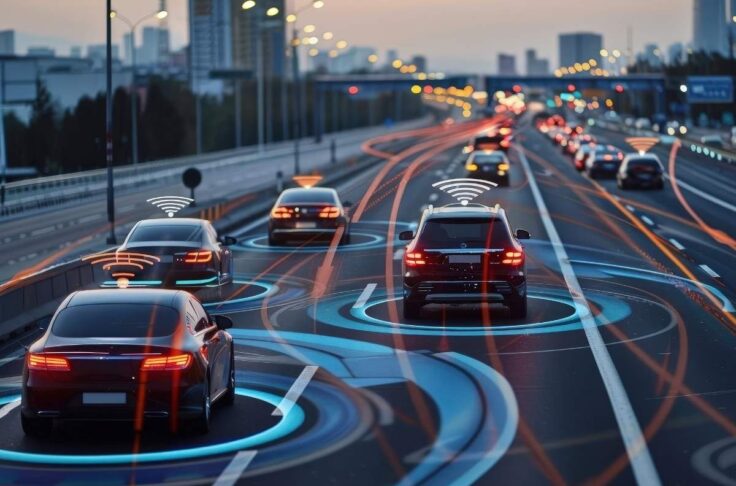3 Best Practices in Mobility – Takeaways from MOVE Asia
Summary
Three takeaways from the leading shared mobility operators in Asia:
- Have a local focus, even when facing global expansions
- Give consumers the flexibility to choose the mode that works for their trip type
- Electric mobility is inevitable, so it should be embraced sooner rather than later

Shared mobility operators face growing pains everyday. Even with market potential and new opportunities arising, it takes capital and political support to make it work. At our MOVE Asia panel, we discussed with operators on how they are dealing with cost pressures, especially now during these tumultuous times.
Ramu Nair, Head of Business Operations at INVERS, moderated the panel, and we were pleased to have the following players share their experience and knowledge:
- Alan Jiang, CEO, Beam
- Sudhindra Reddy, COO, Zoomcar
- Andrew Tan, CEO, GoFun Mobility
As a summary and takeaway of the in-depth discussions, here are three best practices anyone can implement into their shared mobility operations.
1. Be local, even in global expansions
Not surprisingly, the goal of many shared mobility operators is to grow. While success is one city does not guarantee success in another city, it is a risk many operators are willing to take, especially as the market opportunity for new mobility services continues to expand. Nonetheless, there are always challenges to entering a new market.
Beam, a micromobility operator based out of Singapore with four locations across Asia, relies on three key principles: regulatory sustainability, economic sustainability, and environmental sustainability. These principles are of equal importance and form the framework for launching successfully in each city they operate in. In order to execute these sustainability principles, Beam employs a local team who is empowered with autonomy to operate the business in the city.
“It’s like we have four separate start-ups,” Alan Jiang, CEO of Beam, says, “Mobility is an extremely local business. We are laser focused on what is needed in each Asian city. With every city we go to, we make sure we have a fully local team who understands the local culture and regulations. More importantly, learning from each team helps us be stronger as a company.”
2. Give consumers more choices
Consumers have changing mobility needs, and shared mobility operators need to provide an easy, convenient, and affordable transportation solution. If car access is needed, traditional options include a personal car, car rental, or car leasing. However, these options can be expensive and result in the car sitting idle for 95% of the day.
Zoomcar brings the SaaS business model to car rentals in India. Sudhindra Reddy, COO of Zoomcar, has seen a growing interest in their car subscription services. He explains, “The benefit of the car subscriptions is that we strip away the bells and whistles of a car lease program and offer one single price point for the use of a car. This is a unique service and gives consumers a chance to use a car temporarily. They save a lot of money. In fact, OEMs are seeing this market opportunity too, and we are now working with OEMs to offer their own sharing subscription platform.”
A similar story plays out at GoFun, a carsharing service in China. Andrew Tan, CEO of GoFun, also sees the need for more shared cars. He adds, “We recently launched GoFun Connect, a SaaS platform to enable more cars to be shared. GoFun connects OEMs to consumers. It allows young people who want to use a car but cannot afford one, to use one for a few months at a time if they choose.”
3. Get ready for electric
The acronym CASE highlights where mobility is heading – connected, autonomous, shared, and electric. While the path to full electric vehicle adoption is dependent on charging infrastructure, battery capacity, and mileage range, smart mobility operators are transitioning to EVs sooner than later.
At Beam, they already have a fully electric micromobility fleet, all with swappable batteries that make maintenance easier. Beam’s CEO, Alan, says: “Right now, the industry is figuring out how best to swap batteries and operate in general. Even if you give the option for users to go to a kiosk to swap batteries, you will need capital to buy those batteries. It’s something that still needs to be figured out.”
Zoomcar receives subsidies from the government to encourage higher adoption of electric vehicles. This works out for Zoomcar and growing their platform. According to Sudhindra, “Electric vehicles are easier to connect to our platform than ICE vehicles, since they usually need aftermarket telematics. EVs give us more insight into customer behaviour too.”
Andrew from GoFun has a practical reason for using EVs. He explains, “Charging costs are cheaper than refueling with gasoline. Even if you are paying a bit more for an electric car for better range, you are not paying double the cost for double the range. EVs are going to be the main type of vehicle for carsharing in the future.”
Thank you again to our panelists for sharing their industry knowledge and experience with us. We would also like to thank Highways Today for covering this panel.


